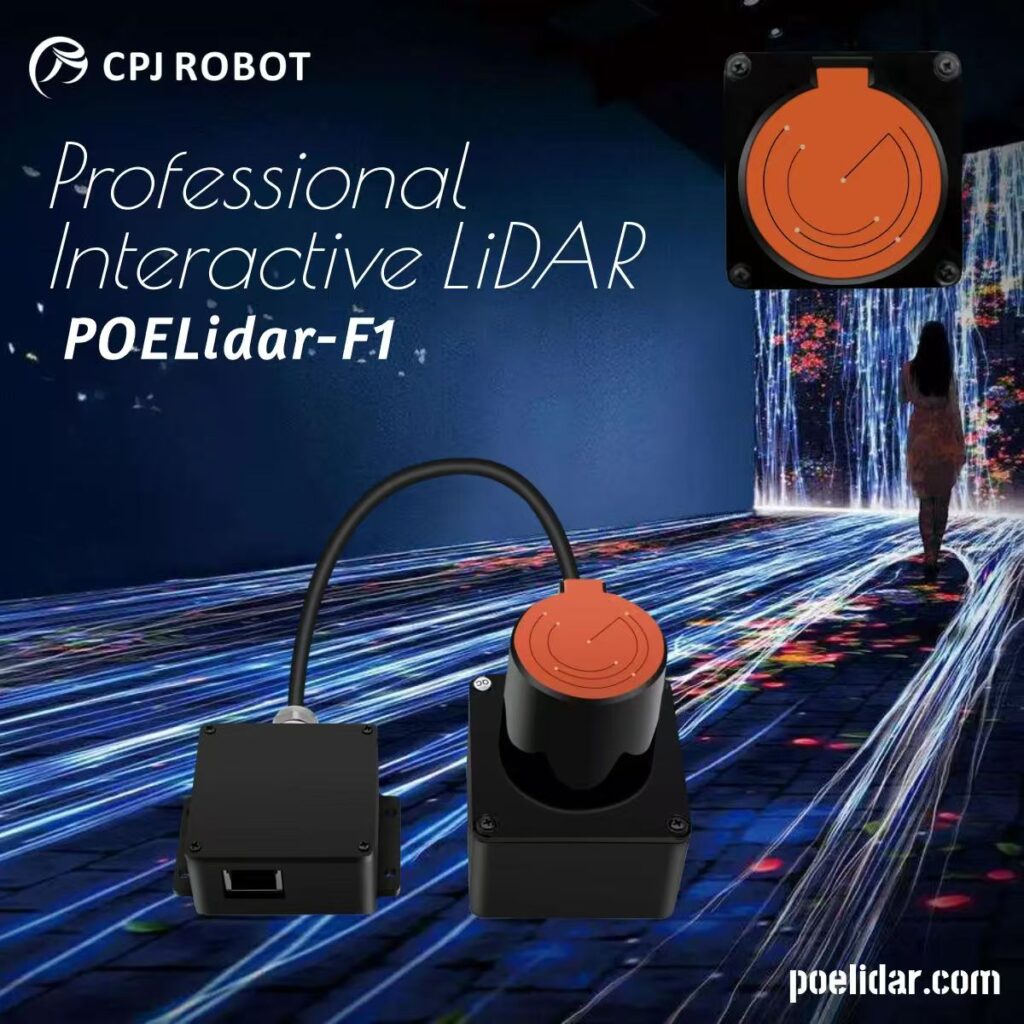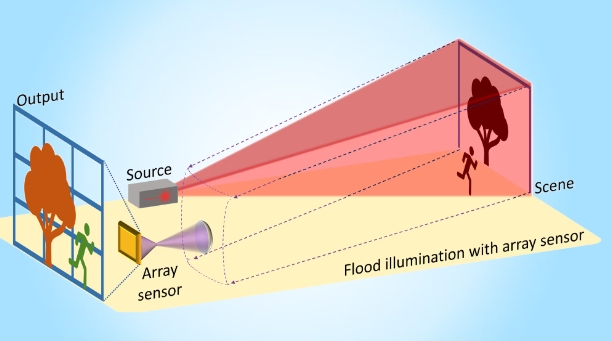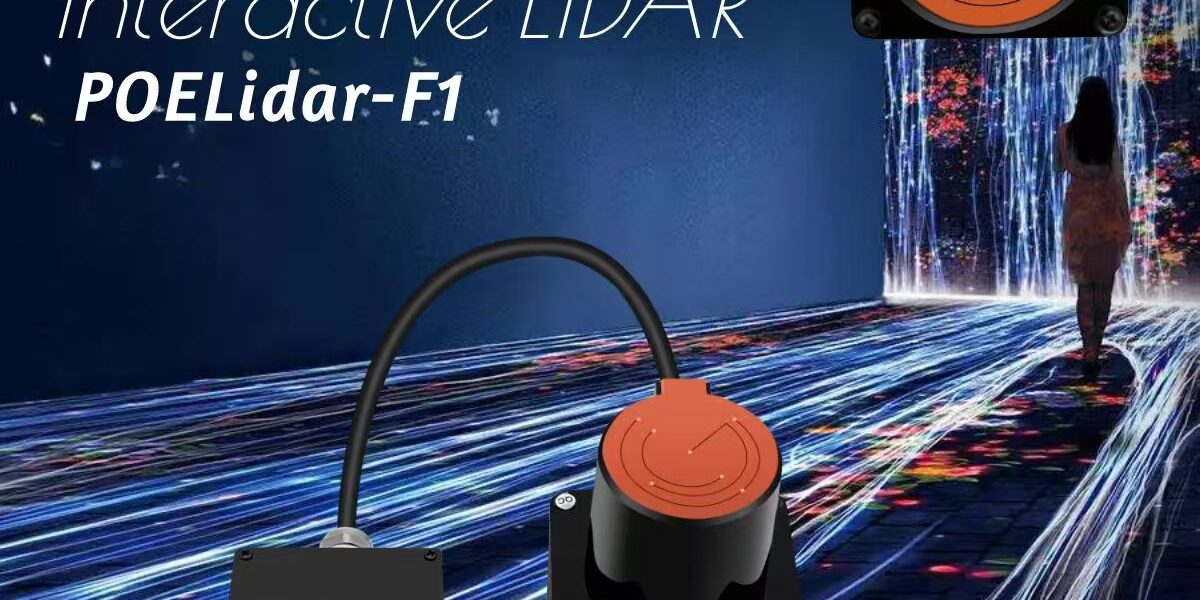Interactive projection systems have revolutionized user engagement in diverse applications, from gaming to exhibitions. Among these technologies, LiDAR-based interactive projection systems stand out due to their unique principles and unparalleled benefits. This article explores the working principles, advantages, and potential applications of LiDAR interactive projection systems, highlighting the use of POE LiDAR technology.
What Is a LiDAR Interactive Projection System?
A LiDAR interactive projection system is an advanced solution that uses LiDAR (Light Detection and Ranging) technology to enable touchless interaction with projected content on floors, walls, or other surfaces. Unlike traditional systems that rely on direct physical contact or predefined surfaces, LiDAR systems detect motion and gestures in the air, providing a seamless and engaging interactive experience.
POE LiDAR (Power over Ethernet Light Detection and Ranging) further enhances this technology by integrating power and data transfer into a single cable, simplifying installation and ensuring reliable performance.

How Does It Work?
The LiDAR interactive system operates by:
- Emitting Infrared Signals: LiDAR sensors emit infrared signals that bounce off objects or users in the designated interaction area.
- Capturing Reflected Signals: These signals are captured to calculate distance, position, and motion.
- Processing Data: The system translates the captured data into interactive commands, enabling touchless control of digital content.
- Synchronizing with Display Systems: The system maps the interaction data to the projected content for real-time engagement.

Key Advantages of LiDAR Interactive Projection Systems
1. Independence from Display Systems
LiDAR touch technology is independent of the display platform, making it highly versatile. It can integrate with any conventional display system, transcending the limitations of traditional multi-touch systems.
2. No Medium Dependency
Using advanced infrared capture technology, LiDAR touch systems create an invisible, multi-point touch interface in the air. This eliminates the need for physical touch surfaces, offering a natural and comfortable user experience.
3. Wide Interaction Range
Models are available with varying radii, such as 4m, 10m, 20m, and 30m, accommodating different interaction needs and venue sizes.
4. Support for Multi-User Interaction
The system supports multi-touch functionality, allowing multiple users to interact simultaneously from different positions. This makes it ideal for large-scale interactive projects.
5. High Adaptability
LiDAR systems can define touch regions on irregularly shaped surfaces and are resistant to light interference—an area where traditional touchscreens fall short.
6. Compact and Easy Installation
The hardware is compact, with a sensor size of just 7x7x8 cm, enabling installation in complex environments without occupying significant space.
7. Standardized Control Protocols
The LiDAR system uses the industry-standard TUIO (Tangible User Interface Objects) protocol for multi-touch communication. This ensures seamless integration with popular software like Coolux, Ventuz, Unity3D, and Adobe Flash.
8. User-Friendly Configuration
The system features an intuitive interface for configuring touch areas and calibrating coordinates with display systems, ensuring quick and hassle-free setup.
Applications of LiDAR Interactive Projection Systems
1. Entertainment and Gaming
Create immersive experiences in interactive floor or wall games, such as sports simulations or collaborative puzzles.
2. Retail and Advertising
Engage customers with dynamic content in shopping malls or exhibitions. Interactive product showcases and branded experiences can boost customer retention.
3. Education and Training
Enhance learning experiences with interactive displays in schools, training centers, or museums. Visual and touchless interactivity can simplify complex concepts.
4. Healthcare
Enable touchless interactions in sterile environments, supporting activities like virtual walkthroughs or interactive instructions for medical personnel.
5. Event Management
Add an interactive dimension to events, exhibitions, and trade shows. Large interactive walls or floors can attract and engage audiences effectively.
6. Corporate and Office Spaces
Install interactive walls in office lobbies or meeting rooms for presentations, brainstorming sessions, or brand storytelling.
7. Public Spaces and Urban Installations
Incorporate LiDAR interactive systems in parks, public squares, or transit hubs for wayfinding, public art, or real-time interactive information.
8. Security and Surveillance
Use LiDAR systems for secure touchless access or monitoring of activity in restricted areas, enhancing safety without compromising user experience.
Why Choose POE LiDAR for Interactive Projection?
POE LiDAR technology offers several distinct advantages for interactive projection systems:
- Simplified Installation: Combines power and data transmission in a single cable.
- High Accuracy: Provides precise touchpoint detection and tracking.
- Scalability: Easily adaptable for various applications, from small-scale setups to large venues.
- Reliability: Ensures stable performance with minimal maintenance.
Conclusion
LiDAR interactive projection systems, powered by POE LiDAR, are transforming the way we interact with digital content. With their independence from display systems, medium-free operation, wide interaction range, and adaptability, they offer a versatile solution for numerous applications. As a result, they are rapidly gaining traction in entertainment, retail, education, healthcare, corporate spaces, and more.
If you’re looking to implement cutting-edge interactive systems, consider leveraging LiDAR-based solutions with POE LiDAR technology to deliver an unparalleled user experience.







